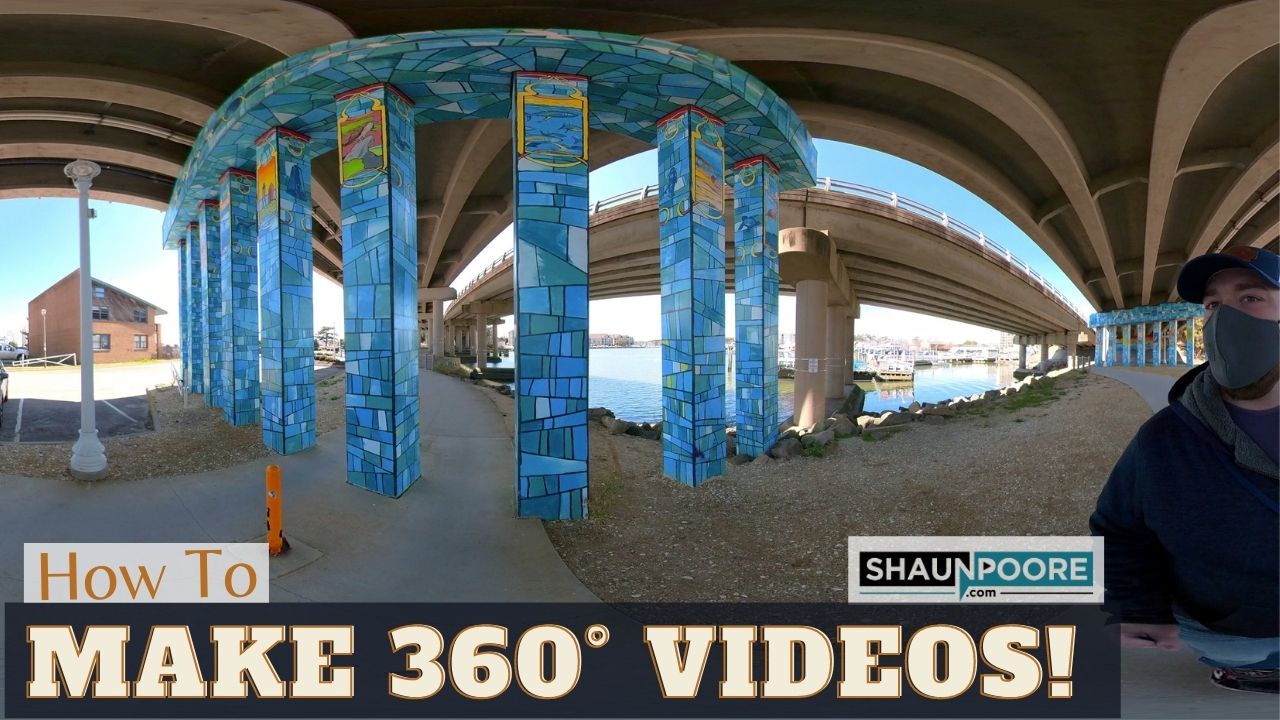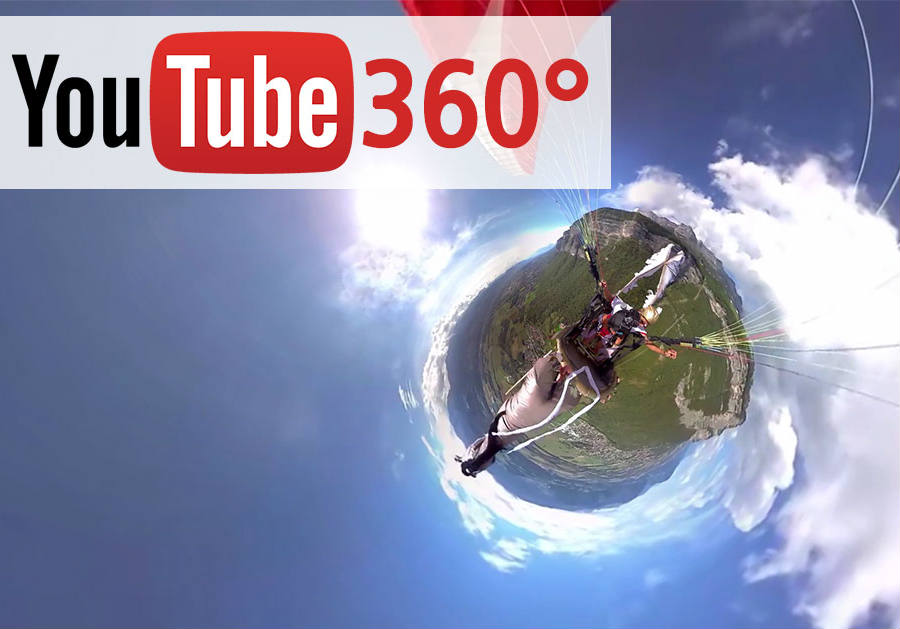Have you ever watched a video that made you feel like you were right there in the action? That’s the magic of 360-degree videos! Unlike traditional videos, these immersive experiences allow viewers to explore their surroundings by moving their devices or using a VR headset. With a simple swipe or tilt, you can see everything around you, making it feel like you’re part of the scene. Whether it's a breathtaking landscape or a thrilling concert, 360-degree videos are revolutionizing how we consume content.
Why Upload 360-Degree Videos to YouTube?

So, why should you consider uploading your 360-degree videos to YouTube? Let’s dive into a few compelling reasons:
- Wider Audience Reach: YouTube is one of the largest video platforms globally, boasting over 2 billion monthly users. By uploading your 360-degree videos here, you tap into a vast audience eager for new experiences.
- Enhanced Engagement: 360-degree videos create a more interactive experience. Viewers can explore the content at their own pace, leading to longer watch times and better engagement metrics.
- SEO Benefits: YouTube is owned by Google, meaning videos uploaded on this platform can improve your search engine visibility. Adding relevant keywords, descriptions, and tags can help your 360-degree videos show up in search results, attracting even more viewers.
- Built-in Tools: YouTube offers various tools for editing and enhancing your videos. You can add annotations, links, and even create playlists to keep your audience engaged.
- Social Sharing: YouTube makes it easy for viewers to share videos across social media platforms. A captivating 360-degree video can quickly go viral, spreading your content far and wide.
Imagine showcasing a travel vlog where viewers can explore the beauty of the Grand Canyon from every angle, or a concert where fans can choose their vantage point. This level of engagement is unmatched and can make your content stand out in a crowded space. Plus, YouTube has already made it simple to upload 360-degree videos, providing detailed guidelines and support to help creators make the most of this feature.
In conclusion, uploading 360-degree videos to YouTube not only enhances the viewer's experience but also opens up numerous opportunities for creators. Whether you're a filmmaker, content creator, or just someone who loves sharing experiences, embracing this format could be your ticket to standing out in the digital landscape!
Also Read This: How to Download YouTube Videos Without a Premium Account
3. Preparing Your 360-Degree Video for Upload

So, you’ve captured some stunning 360-degree footage, and now it’s time to share it with the world on YouTube. But before you hit that upload button, there are a few important steps to ensure your video looks its best. Let’s dive into preparing your 360-degree video!
1. Edit Your Footage: First things first, editing is essential. Use editing software that supports 360-degree video, like Adobe Premiere Pro, Final Cut Pro, or specialized tools like Kolor Autopano Video. Make sure to:
- Trim unnecessary parts of the video.
- Add transitions if needed.
- Incorporate music or voiceovers for a more immersive experience.
2. Choose the Right Resolution: To ensure quality, export your video in a high resolution. YouTube supports resolutions up to 8K, but 4K is a great balance between quality and upload time. Choose a resolution that suits your audience's viewing habits.
3. Add Metadata: Before exporting, don’t forget to add metadata that tells YouTube this is a 360-degree video. This includes:
- Setting the correct projection type (equirectangular).
- Embedding the 360-degree metadata using a dedicated tool or plugin. For instance, you can use the YouTube API for advanced users.
4. Review and Render: Once everything is in place, review your video one last time. Check for any visual glitches or areas that may need improving. After that, render your final video and get ready to upload!
Also Read This: How Do I Delete Subscribers on YouTube? Managing and Removing Subscribers from Your Channel
4. Step-by-Step Guide to Uploading 360-Degree Videos
Now that your video is polished and ready, let’s go through the uploading process on YouTube. It’s super straightforward, even for newcomers!
Step 1: Sign In to YouTube
Start by signing into your YouTube account. If you don’t have one, creating an account is easy and free!
Step 2: Click on the Upload Button
On your YouTube homepage, look for the camera icon with a plus sign (usually at the top right). Click it, and then select “Upload video.”
Step 3: Choose Your Video File
Drag and drop your 360-degree video file or click on “Select files” to browse through your folders. Remember, the file needs to be in a compatible format, like MP4.
Step 4: Add Video Details
While your video uploads, fill in the necessary details:
- Title: Make it catchy and descriptive!
- Description: Give viewers an idea of what to expect.
- Tags: Use keywords that will help your video be discovered.
Step 5: Set the Visibility
Choose whether you want your video to be public, unlisted, or private. If you’re unsure, starting with “Public” is a great way to get more viewers.
Step 6: Advanced Settings
Scroll down to the “Advanced settings” section. Here, make sure to check the box that indicates your video is 360-degree. This is crucial for YouTube to process your video correctly.
Step 7: Publish!
Once everything looks good, hit that “Publish” button! Your video will start processing, and once it’s ready, it’s live for everyone to enjoy!
And there you have it! Follow these steps, and you’ll be well on your way to sharing your immersive 360-degree experiences with the world. Happy uploading!
Also Read This: How to Switch to the New YouTube Layout: A Quick Guide to the Latest Changes
5. Optimizing Your Video Settings for Maximum Impact
When it comes to uploading 360-degree videos to YouTube, the settings you choose can make a world of difference in how your content is perceived. To ensure that your viewers have the best experience possible, here are some key settings to consider:
- Resolution: Aim for at least 4K resolution (3840 x 2160 pixels) for your 360-degree videos. Higher resolution means a clearer, more immersive experience for viewers, especially when they’re exploring the video.
- Bitrate: A higher bitrate can significantly improve video quality. For 4K videos, aim for a bitrate of around 40 Mbps. Experiment with settings to find the sweet spot that balances quality and file size.
- Frame Rate: A frame rate of 30 fps is standard, but if your video has fast action, consider using 60 fps for smoother motion. This helps in making the experience feel more real, especially in 360-degree environments.
- Audio: Don’t forget about sound! Use spatial audio techniques to create an immersive audio landscape. This means recording audio that reflects the viewer’s perspective, enhancing the overall experience.
Before you hit that upload button, test your video settings by watching the video in various resolutions and formats. This quick check can prevent potential issues that might arise from unexpected settings.
Lastly, keep an eye on the metadata. Adding appropriate titles, descriptions, and tags helps YouTube understand the content of your video, making it easier for viewers to find your creation. Effective titles and descriptions not only capture attention but also improve your video’s chances of appearing in relevant searches.
Also Read This: How to Delete Search History on YouTube on iPad for Privacy
6. Enhancing Viewer Engagement with Interactive Features
In the realm of 360-degree videos, viewer engagement can make or break the experience. You want your audience to feel like they’re part of the action, not just passive observers. Here are some interactive features you can incorporate to elevate viewer engagement:
- Clickable Hotspots: These are interactive points within the video that viewers can click on to learn more. Imagine a 360-degree nature documentary where viewers can click on a bird to hear its song or get information about its habitat!
- End Screens and Cards: Utilize YouTube’s built-in features to promote other videos or playlists at the end of your 360-degree video. This not only keeps viewers engaged but also encourages them to explore more of your content.
- Q&A Sections: After your video, consider embedding a Q&A feature where viewers can ask questions or share their thoughts. This creates a two-way communication channel and makes viewers feel more connected to your content.
- Polls and Surveys: Engage your audience by incorporating polls or surveys related to the content. For instance, if your video is about travel destinations, ask viewers which location they’d like to explore next!
Remember, the goal is to provide a rich and engaging experience that encourages viewer interaction. Monitor viewer feedback and analytics to see which features resonate most with your audience. This data can guide your future content creation and help you refine your approach to interactive storytelling.
By optimizing your video settings and enhancing engagement through interactive features, you’ll not only improve the viewing experience but also foster a community of avid viewers eager to see what you create next!
Also Read This: How Do I Get ESPN Plus on YouTube TV? How to Access ESPN Plus Content on YouTube TV
7. Promoting Your 360-Degree Video on YouTube
So, you've uploaded your stunning 360-degree video to YouTube—what’s next? Promotion! It’s crucial to get your content in front of as many eyes as possible. Here are some effective strategies:
- Social Media Sharing: Share your video on platforms like Facebook, Twitter, and Instagram. Create engaging posts that highlight what makes your 360-degree video unique. Don’t forget to include the link!
- Engage with Your Audience: Respond to comments on your video. Engage with viewers by asking questions and encouraging them to share their thoughts on the experience. This builds a community around your content.
- Collaborate with Other Creators: Partner with other YouTubers or influencers in your niche. A shoutout or a collaboration can introduce your video to a whole new audience.
- Email Marketing: If you have an email list, don’t hesitate to share your new video with your subscribers. Include a catchy subject line and a brief description to entice them to watch.
- Utilize YouTube Features: Use YouTube's features like end screens and cards to drive traffic to your 360-degree video. Make sure to link to other related content you've created to keep viewers engaged longer.
Consider creating teaser clips or trailers for your videos that highlight the immersive nature of 360-degree content. You can post these snippets on platforms like TikTok or Instagram Reels to capture attention and drive traffic back to your main video.
Another effective method is to host a live Q&A session after the release of your video. This can create buzz and offer viewers a chance to engage more deeply with the content you’ve produced. The goal is to create excitement and encourage viewers to share your video with others.
8. Conclusion and Best Practices for Future Uploads
In conclusion, uploading 360-degree videos to YouTube is an exciting way to elevate your content and engage your audience in a whole new manner. But remember, it’s not just about creating immersive content; it’s about sharing it effectively. Here are some best practices to keep in mind for your future uploads:
- Optimize Your Metadata: Always optimize your title, description, and tags with relevant keywords. This helps your video rank better in search results.
- Quality is Key: High-quality video is essential. Invest in good equipment and editing software to ensure your video looks and sounds great.
- Engagement Metrics Matter: Keep an eye on your analytics. Understanding viewer retention and engagement will help you refine your content strategy.
- Stay Consistent: Regularly upload new content to keep your audience engaged. Consistency builds trust and anticipation among viewers.
- Experiment and Learn: Don’t be afraid to try new things. Experiment with different styles of 360-degree videos to see what resonates most with your audience.
Ultimately, the world of 360-degree video is still evolving, and there’s a lot of room for creativity and innovation. By following these best practices and actively promoting your content, you’ll create a more enjoyable viewing experience not just for your audience, but for yourself as well. Happy filming!
 admin
admin








